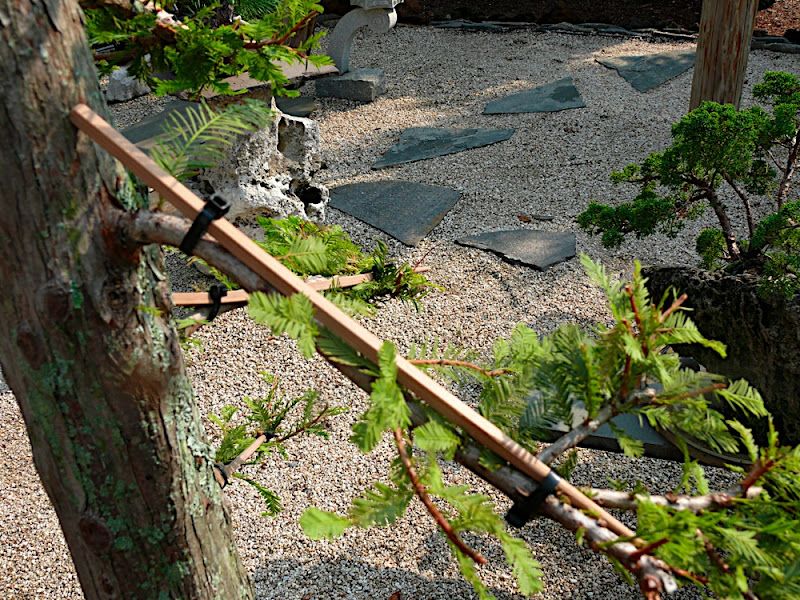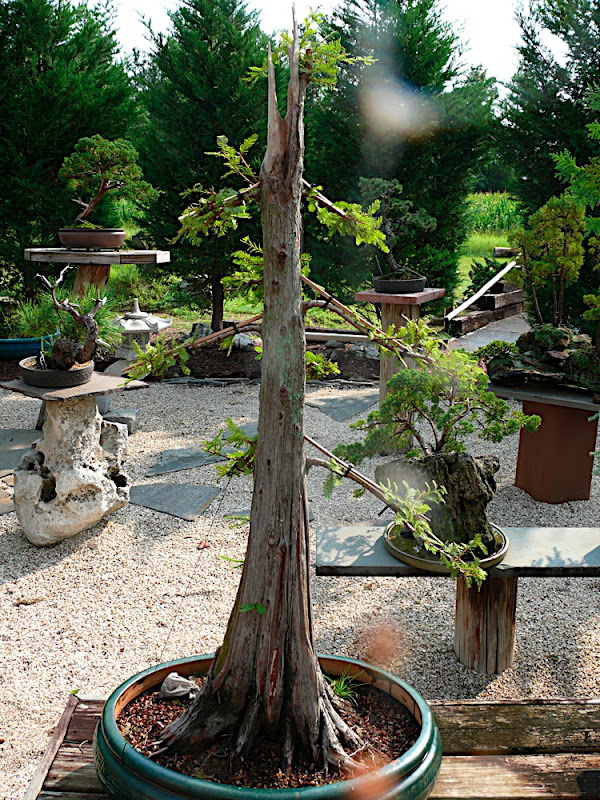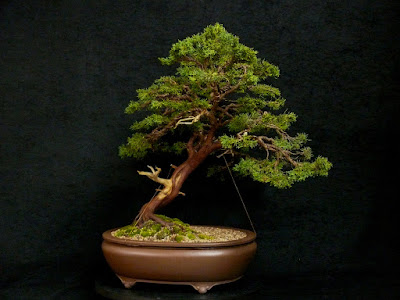Hey Rusty,
There is at least one guy wire on the tree...When I started working on this tree that was my plan of attack. The problem was that I wanted the branches to begin bending as close to the trunk as possible and that was not working with the guy wires. I also think that guy wires often are not effective for long term change. In my experience if you want a branch to hold its shape you actually need to do some damage to its structure during the shaping. Then, as the branch heels and begins to grow again the new shape becomes permanent. In my experience the bends that guy wires most often create do not cause enough damage to the branch. The result of this is that a guy wire must stay in place much much longer and significant growth needs to occur before the branch will hold its shape in the long term. Of course I am sure there are exceptions and varying experiences using guy wires. I also intend to experiment more with Irene's technique.
Not long before working on this tree I had been to see Arthur at the Arboretum. I noticed a couple of trees in which he had used thin pieces of wood secured with twine in a similar fashion. I have also seen similar techniques used to train garden trees in Japan.
You are exactly correct in the diagnosis of how this technique works. It requires two points that connect the chopstick to the branch and one end of the chopstick must be able to make contact with the trunk. The secret I found is to apply the wire ties loosely and in a little bit from each end of the chopstick...allowing the chopstick to slide along the branch as needed. Once the three components are in place, I pulled the branch down and slid the end of the chopstick flush against the trunk making sure both of the ties were still in position (sometimes I would further tighten the wire ties if necessary at this point) and the force of the branch holds the chopstick in place. It was very easy to adjust the angle of the branch by simply adjusting the position of the chopstick. Once I figured out the method on the first branch, it only took a few minutes to apply the technique to the remaining branches.
In a couple of instances after the primary bend had been made, I inserted another chopstick or similar implement to control the position of some of the secondary branching.
I applied this technique to this tree in early August...now 3 months later I have only had one issue. One of the chopsticks began to bend and lose its rigidity. I simply pulled that one out and replaced it using the same ties and everything has been fine since.
Given the tendency of BC's branches to not hold their shaping well, I am hoping that this will be a method that can remain on the tree for a year or more. I will try to keep you updated. I also fully expect to have to wire this tree in the future in order to place and shape secondary and tertiary branches but hopefully it will not be necessary to have to deal with the inclination of the branches.
I think the advantages of this technique is that it is very easy to apply and it can be applied without damaging or removing foliage. There is less chance for scaring when compared with wiring. It is cheap in comparison to wiring. And, hopefully it will be more effective than guy wires alone.
The primary disadvantage is that only one bend is possible on each branch. Its also ugly but that is not really a consideration for me since the tree is in training.
That maybe more of answer than you bargained for

Anyhow, I hope you and yours have have a safe and happy holiday.
John




